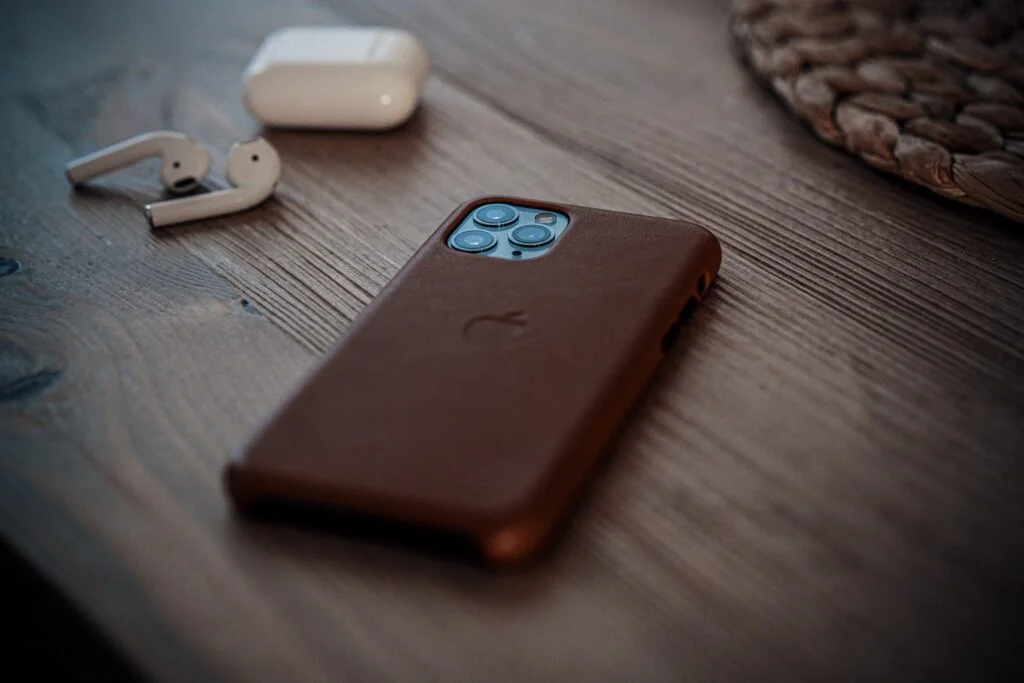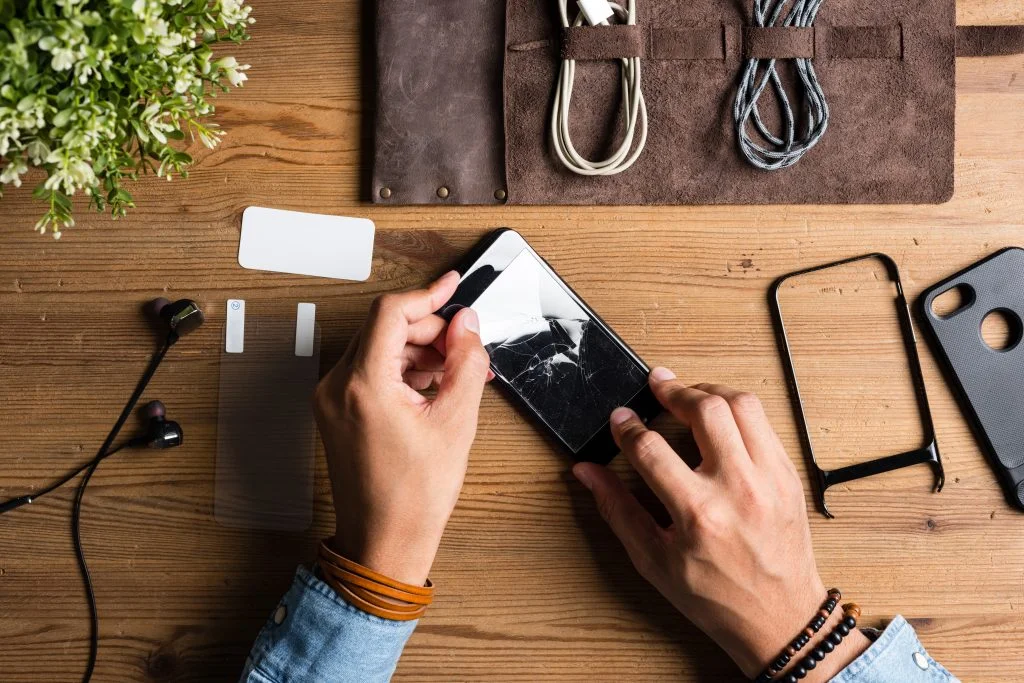our smartphone is more than just a tool for communication, it’s an investment. With our phones constantly in use, protecting them from damage is crucial to ensuring they stay functional and look good for as long as possible. Two essential accessories that help with this are the phone case and the screen protector. These items take the brunt of daily wear and tear, safeguarding your device from drops, scratches, and other potential damages.
However, just like any other protective gear, phone cases and screen protectors can wear out over time and lose their effectiveness. But how do you know when it’s time to replace them? In this article, we’ll discuss the key signs that indicate you need to change your phone case and screen protector to keep your smartphone safe and functional.
Signs You Need to Change Your Phone Case
A phone case is the first line of defence for your device, protecting it from drops, impacts, and general wear. Over time, though, your case can degrade or lose its ability to keep your phone safe. Here are the primary signs that it’s time to replace your phone case.

1. Visible Damage
Cracks, scratches, or splits in your phone case are the most obvious indicators that it’s time for a replacement. A cracked case won’t be able to effectively absorb the impact of a fall, leaving your phone vulnerable to damage.
Why Is It Important?
A phone case with visible damage like cracks or chips loses its ability to provide proper protection. Even if the damage seems minor, the structural integrity of the case could be compromised. A new case will ensure full protection for your phone.
2. Lose Fit or Warping
Phone cases are designed to fit snugly around your device, but over time, they can warp or become loose. A loose or ill-fitting case may not provide full coverage, leaving parts of your phone exposed to potential damage.
Why Does This Happen?
Materials like silicone, TPU (thermoplastic polyurethane), or rubber can stretch or warp with regular use, heat exposure, or after repeatedly being taken off and put back on. If your phone case no longer fits snugly around your device, it’s time to replace it.
3. Discoloration or Fading
Phone cases often start looking worn out over time, with discolouration or fading being common issues, particularly with lighter-coloured or transparent cases. While this might not affect the case’s protective abilities, it can detract from the phone’s appearance.
Why Is This Important?
Discolouration can also be a sign of material degradation, which may mean the case is starting to break down. A worn-out, discoloured case might not offer the same level of protection, so it’s best to replace it with one that’s in better condition.
4. Reduced Grip
One of the reasons people use phone cases is to improve grip and prevent accidental drops. If you find that your phone case has become slippery over time, it’s no longer serving its intended purpose.
What Causes This?
Frequent use and exposure to sweat, oils from your skin, and dust can wear down the textured surfaces or rubberized materials on your case, reducing its grip. If you start dropping your phone more often due to a slippery case, it’s time to upgrade to a new one with a better grip.
5. Buttons and Ports Are Difficult to Use
Phone cases should offer protection while still allowing easy access to buttons, ports, and other features of your device. If the case starts interfering with the functionality of your phone—making it harder to press buttons or plug-in accessories—it may have warped or shifted over time.
Why Is This Important?
Proper access to your phone’s buttons and ports is essential for everyday use. A phone case that hinders your ability to interact with your device isn’t doing its job effectively. If this happens, it’s a sign that you need a new case.
6. Case No Longer Matches Your Style or Phone Model
Style is another factor to consider. If your phone case no longer matches your personal taste or if you’ve upgraded to a new phone model but are still using your old case, it’s time for a change. Newer phone models may have slightly different dimensions, and using an outdated case can affect the overall protection.
Signs You Need to Change Your Screen Protector
Your phone’s screen is one of its most vulnerable components. A screen protector shields it from scratches, cracks, and other damage. Over time, though, screen protectors can wear out or stop functioning properly. Here are the signs that indicate it’s time for a replacement.

1. Cracks or Chips on the Screen Protector
Just like a cracked phone screen, a cracked screen protector needs to be replaced. Even small cracks can weaken the structure of the protector, reducing its ability to safeguard your screen.
Why Is This Important?
A cracked screen protector won’t effectively protect your phone from further impacts. Additionally, cracks can spread, and any pressure applied to the protector can result in more significant damage. Replacing it with a new protector will restore full protection to your phone’s screen.
2. Scratches and Scuffs on the Surface
Over time, screen protectors can accumulate scratches and scuffs from everyday use. While these marks may not affect the functionality of the protector, they can make it harder to see your screen clearly and detract from the overall appearance of your device.
Why Does This Happen?
Screen protectors, especially plastic ones, can easily get scratched by keys, coins, or other objects that come into contact with your phone. If the scratches start to interfere with your ability to view your screen, it’s time to replace the protector.
3. Reduced Touch Sensitivity
A high-quality screen protector should allow you to use your phone’s touchscreen without any noticeable interference. If you start noticing a delay in response or reduced touch sensitivity, your screen protector may be the culprit.
What Causes This?
Touch sensitivity can degrade if the screen protector becomes too worn or if dirt and oils build up over time. If your phone becomes less responsive to touch and cleaning the protector doesn’t help, it’s time to replace it.
4. Discoloration or Yellowing
Some screen protectors, especially cheaper plastic ones, may begin to discolour or yellow over time, particularly after exposure to sunlight or heat. This discolouration can make your phone screen appear dim or affect colour clarity.
Why Is This Important?
Discolouration is often a sign that the materials in the screen protector are breaking down, which means it’s time for a replacement. A new, clear screen protector will restore the visual quality of your phone’s display.
5. Air Bubbles That Won’t Go Away
Air bubbles can form under a screen protector if it isn’t applied correctly, but they can also develop over time as the adhesive wears down. If you notice new bubbles forming or existing ones growing in size, it’s a sign that the screen protector isn’t adhering properly.
Why Does This Happen?
Bubbles are often caused by dirt, dust, or improper installation. If the bubbles are persistent and can’t be smoothed out, it’s best to replace the screen protector. Bubbles can interfere with touch sensitivity and leave parts of your screen exposed to potential damage.
6. Peeling at the Edges
Screen protectors are meant to stay securely attached to your phone’s screen, but if you notice the edges starting to peel away, it’s a clear sign that it needs to be replaced. Peeling edges can allow dirt and debris to get underneath the protector, reducing its effectiveness and making your phone more vulnerable to scratches.
What Causes This?
Peeling can occur due to exposure to heat, moisture, or frequent removal of the protector. Once a screen protector starts to peel, it will continue to degrade, so it’s best to replace it promptly.
How Often Should You Replace Your Phone Case and Screen Protector?
The frequency with which you need to replace your phone case and screen protector depends on several factors, including how often you use your phone, the quality of the materials, and how much wear and tear the items experience. Here’s a general guideline for when you should replace these accessories:
- Phone Case: On average, a phone case should be replaced every 12 to 24 months. However, if you notice visible damage, a loose fit, or other signs of wear, replace it sooner.
- Screen Protector: Screen protectors can last anywhere from a few months to a couple of years, depending on their quality and how well they are cared for. However, if your screen protector becomes scratched, cracked, or starts to peel, it’s time for a new one.
Tips for Choosing a New Phone Case and Screen Protector
When it’s time to replace your phone case or screen protector, you’ll want to choose high-quality replacements that offer the best protection. Here are some tips for selecting the right products:
1. Look for High-Quality Materials
When choosing a new phone case, opt for materials that offer good impact resistance, like TPU, silicone, or polycarbonate. For screen protectors, tempered glass is a great option because it’s durable and provides excellent protection against scratches and cracks.
2. Choose the Right Level of Protection
Different phone cases offer varying levels of protection. If you’re prone to dropping your phone, consider a rugged case with reinforced corners. For screen protectors, a thicker tempered glass option will provide more protection than a thin plastic film.
3. Ensure Compatibility
Make sure the phone case and screen protector you choose are compatible with your specific phone model. A case that doesn’t fit properly won’t provide the protection you need, and a screen protector that’s too small or large may leave your phone’s screen exposed.
Arthur is a senior member of the communications team who has worked at several well-known companies over the past 10 years. As a writer with many years of experience in the technology sector, focusing on reviewing mobile phones and accessories, he has written about many products or has been hands-on with them at some point




